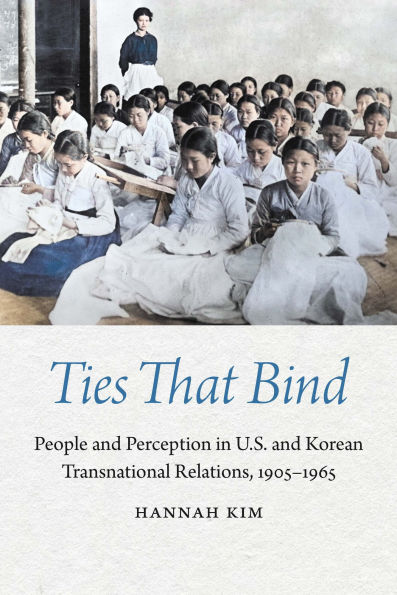Ties That Bind narrates five stories of how a transnational community helped shape American perceptions and understandings of Korea and Koreans, from a time when only a small number of Americans knew anything about Korea to a time when most Americans were aware of Korea’s geopolitical significance. Three of the moments took place when Korea was a colony of Japan: the so-called Conspiracy Case in 1911, the independence movement of 1919, and the efforts to recognize Korean independence during World War II. The other two moments transpired in the context of the Cold War, when Korean orphans and Korean exchange students came to the United States in the 1950s.
In these five stories, the interplay of people, perceptions, and official and unofficial policy can be seen in the work of people who tried to influence U.S. and Korean relations by binding Americans and Koreans through shared values and experiences. They did so by portraying Koreans as Christian converts, as supporters of democracy and democratic ideals, and as people embracing Western or American cultural norms. The actors in this book did not always succeed in their goals, but through their endeavors, they facilitated policy discussions, forged ties between the United States and Korea, and began to break down cultural barriers between Koreans and Americans.
1145843540
In these five stories, the interplay of people, perceptions, and official and unofficial policy can be seen in the work of people who tried to influence U.S. and Korean relations by binding Americans and Koreans through shared values and experiences. They did so by portraying Koreans as Christian converts, as supporters of democracy and democratic ideals, and as people embracing Western or American cultural norms. The actors in this book did not always succeed in their goals, but through their endeavors, they facilitated policy discussions, forged ties between the United States and Korea, and began to break down cultural barriers between Koreans and Americans.
Ties That Bind: People and Perception in U.S. and Korean Transnational Relations, 1905-1965
Ties That Bind narrates five stories of how a transnational community helped shape American perceptions and understandings of Korea and Koreans, from a time when only a small number of Americans knew anything about Korea to a time when most Americans were aware of Korea’s geopolitical significance. Three of the moments took place when Korea was a colony of Japan: the so-called Conspiracy Case in 1911, the independence movement of 1919, and the efforts to recognize Korean independence during World War II. The other two moments transpired in the context of the Cold War, when Korean orphans and Korean exchange students came to the United States in the 1950s.
In these five stories, the interplay of people, perceptions, and official and unofficial policy can be seen in the work of people who tried to influence U.S. and Korean relations by binding Americans and Koreans through shared values and experiences. They did so by portraying Koreans as Christian converts, as supporters of democracy and democratic ideals, and as people embracing Western or American cultural norms. The actors in this book did not always succeed in their goals, but through their endeavors, they facilitated policy discussions, forged ties between the United States and Korea, and began to break down cultural barriers between Koreans and Americans.
In these five stories, the interplay of people, perceptions, and official and unofficial policy can be seen in the work of people who tried to influence U.S. and Korean relations by binding Americans and Koreans through shared values and experiences. They did so by portraying Koreans as Christian converts, as supporters of democracy and democratic ideals, and as people embracing Western or American cultural norms. The actors in this book did not always succeed in their goals, but through their endeavors, they facilitated policy discussions, forged ties between the United States and Korea, and began to break down cultural barriers between Koreans and Americans.
65.0
Pre Order
5
1

Ties That Bind: People and Perception in U.S. and Korean Transnational Relations, 1905-1965
320
Ties That Bind: People and Perception in U.S. and Korean Transnational Relations, 1905-1965
320Related collections and offers
65.0
Pre Order

Product Details
| ISBN-13: | 9781496243232 |
|---|---|
| Publisher: | Nebraska |
| Publication date: | 08/01/2025 |
| Series: | Studies in Pacific Worlds |
| Sold by: | Barnes & Noble |
| Format: | eBook |
| Pages: | 320 |
| File size: | 4 MB |
About the Author
From the B&N Reads Blog
